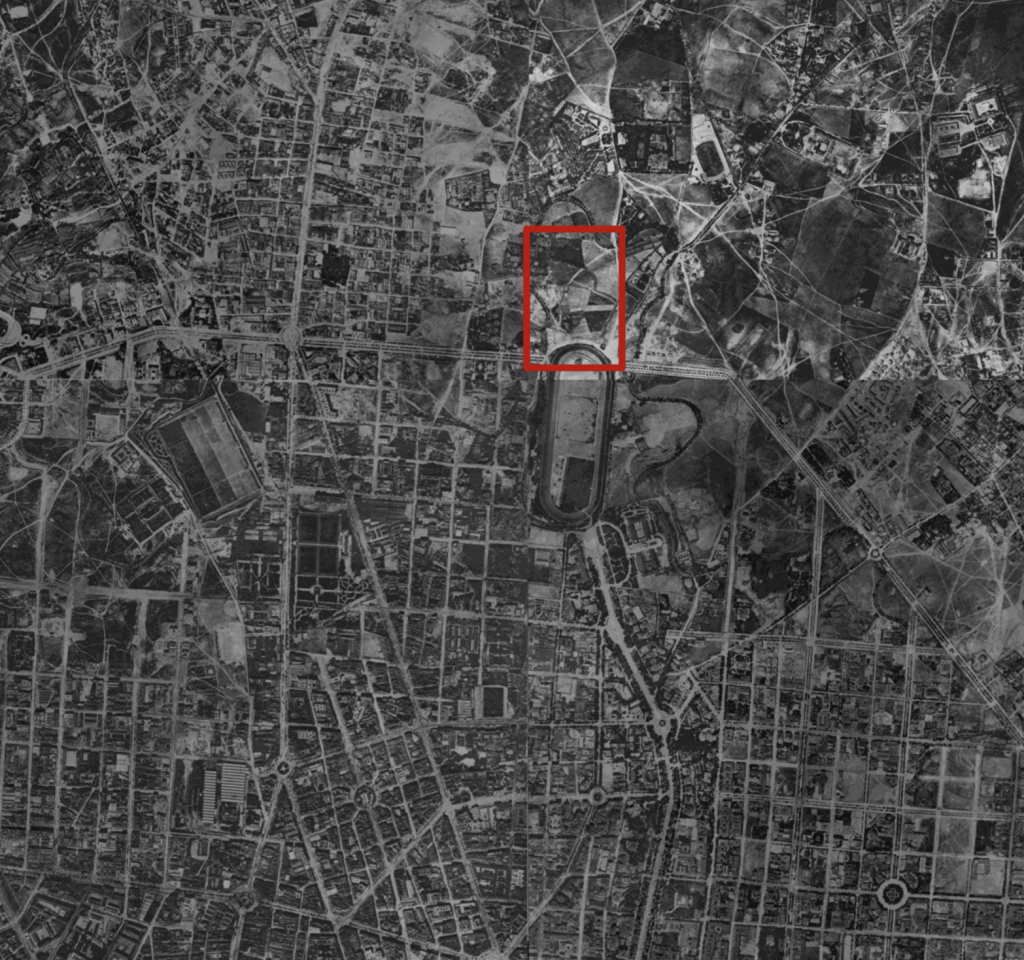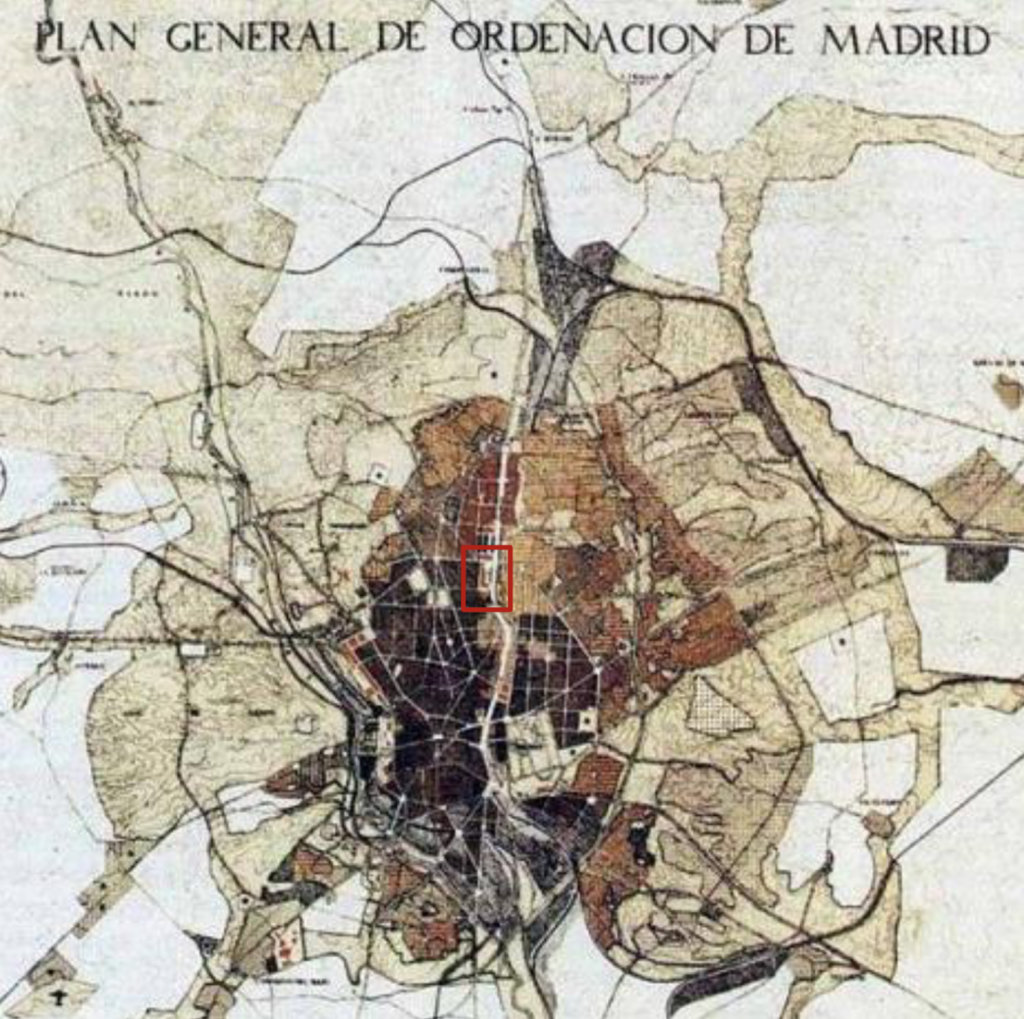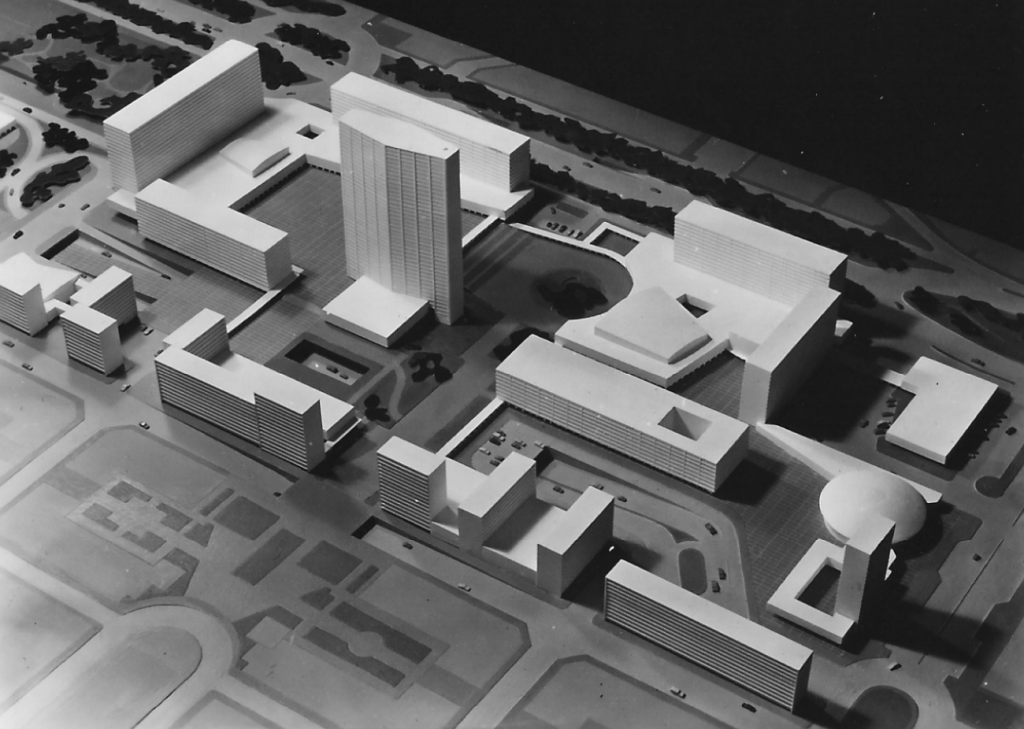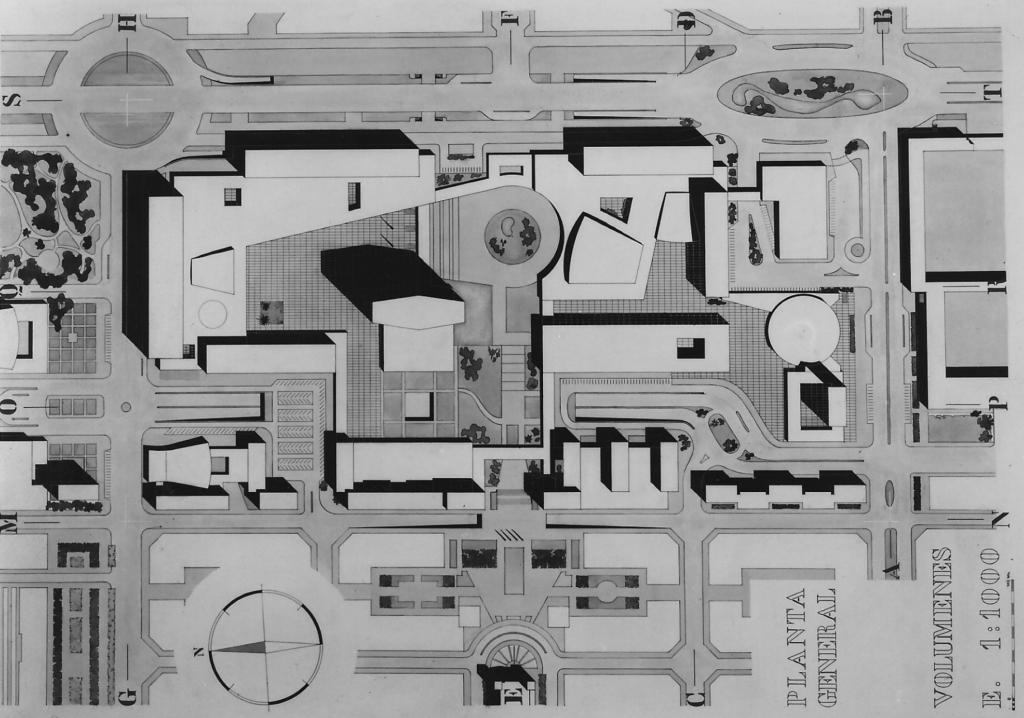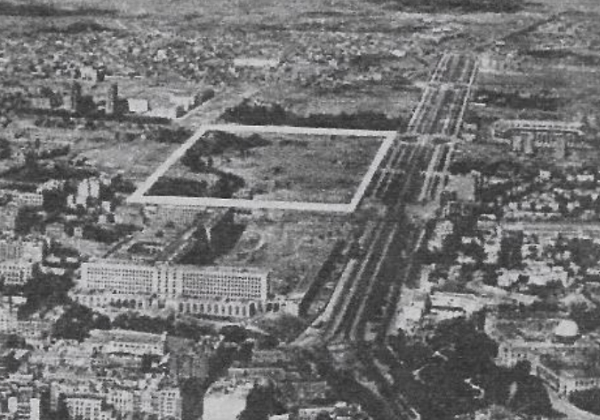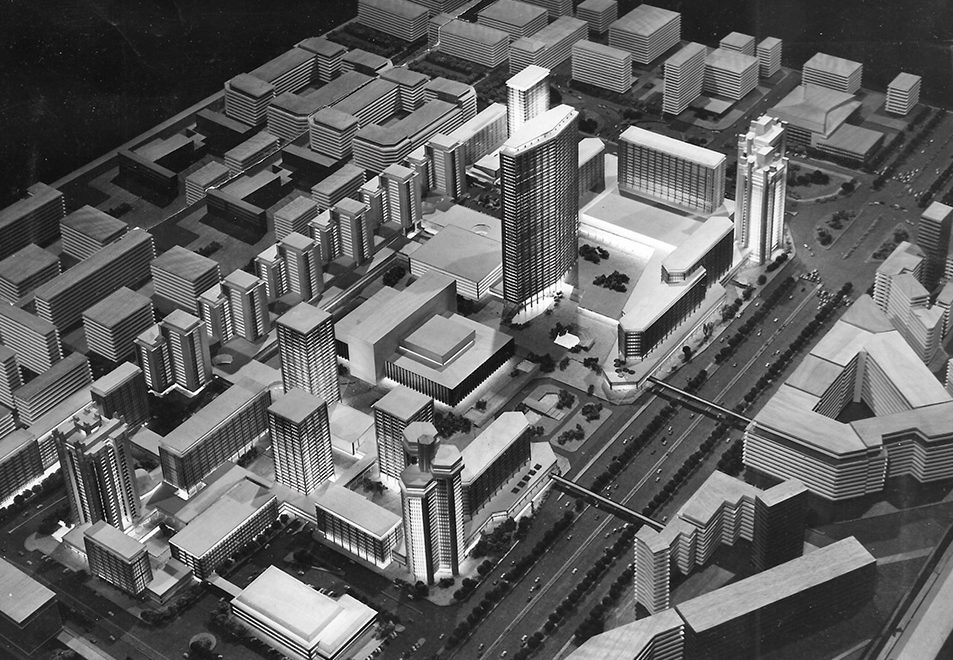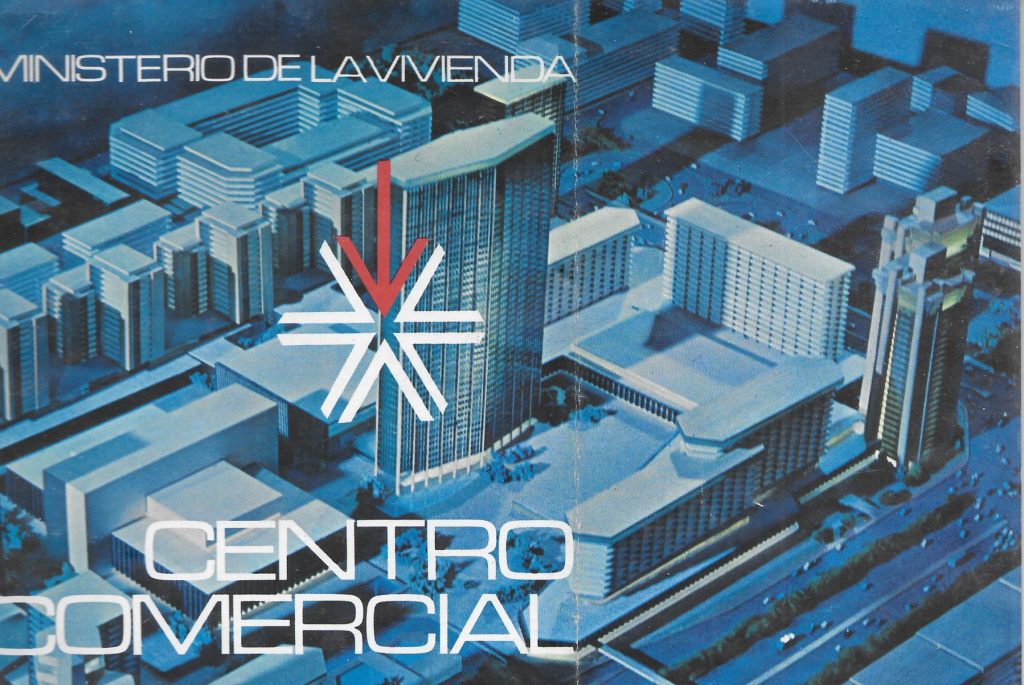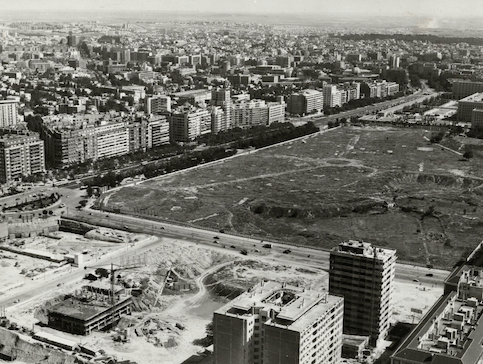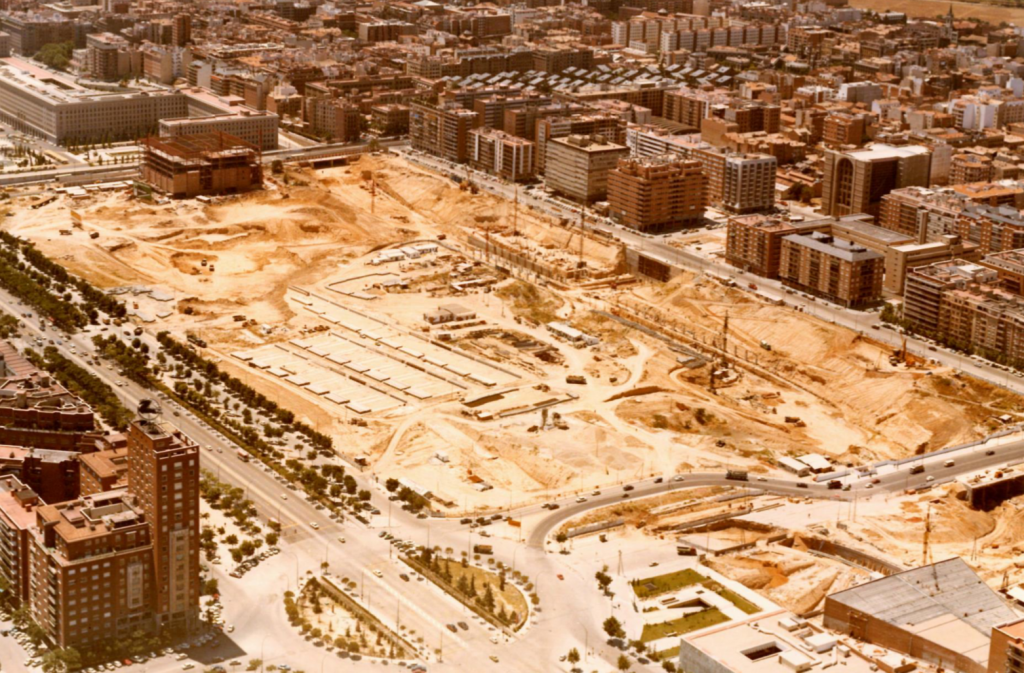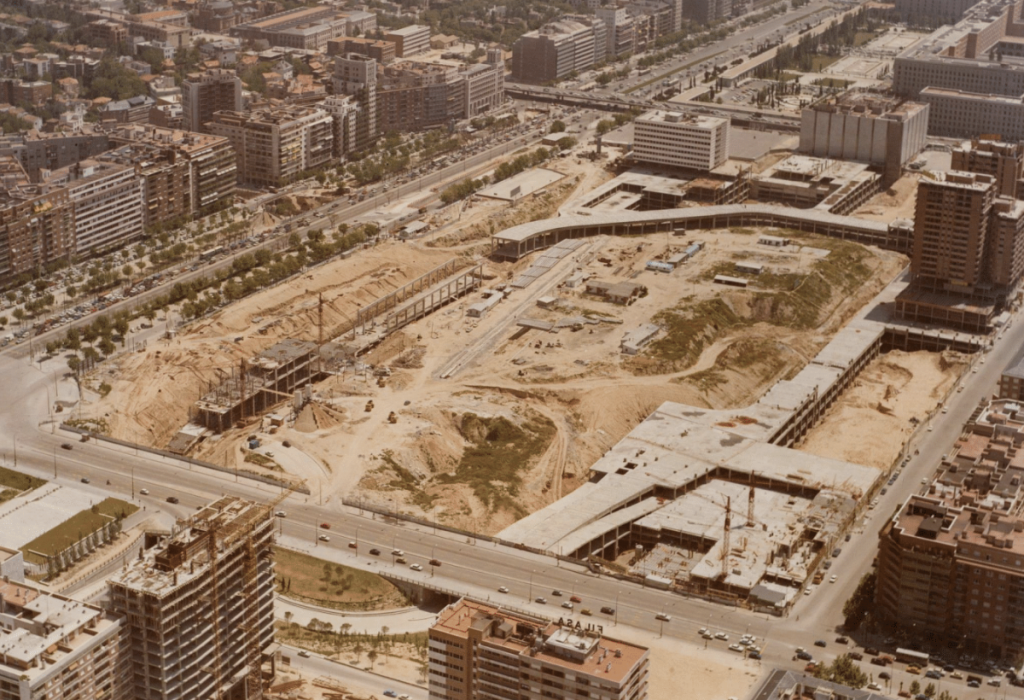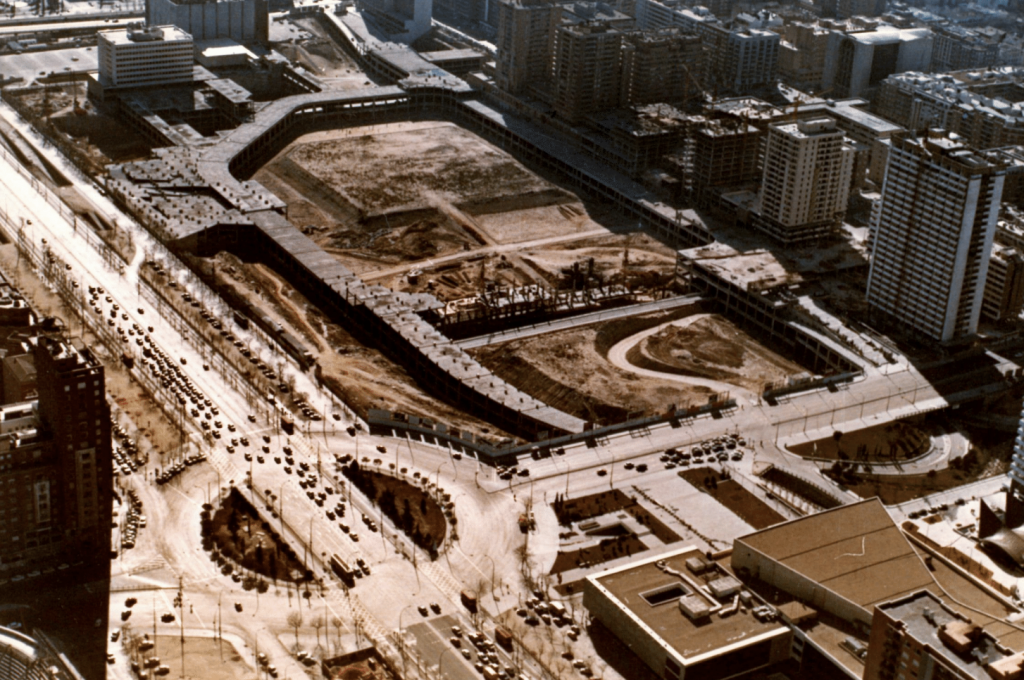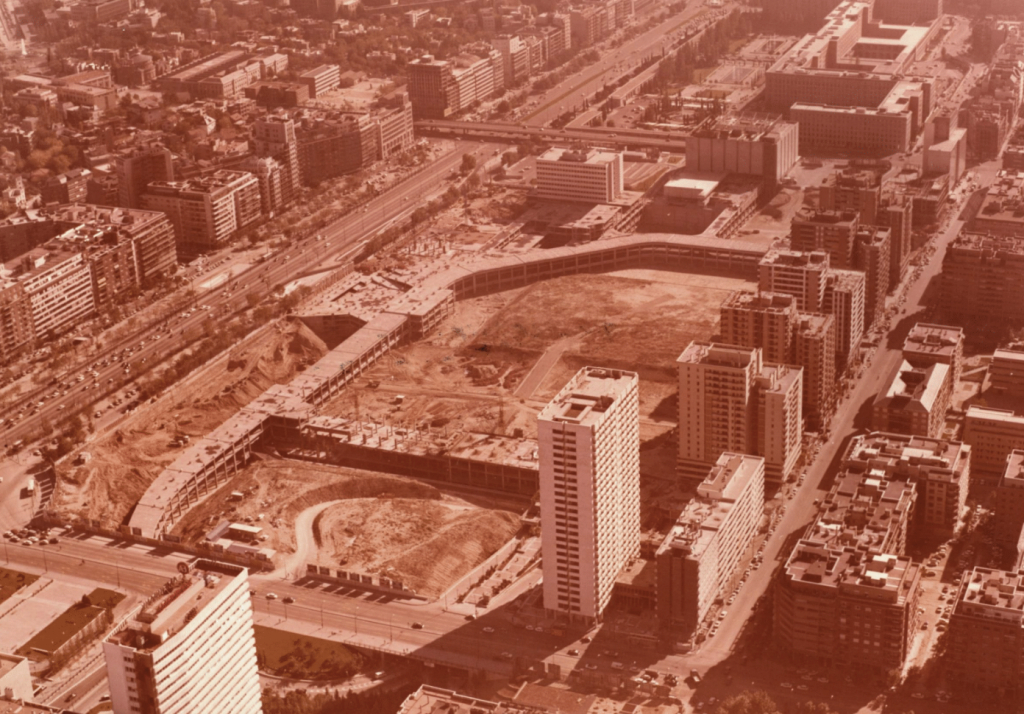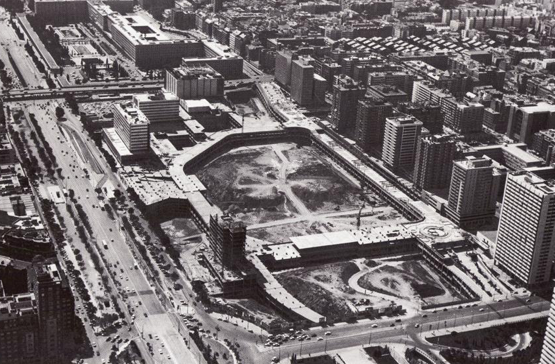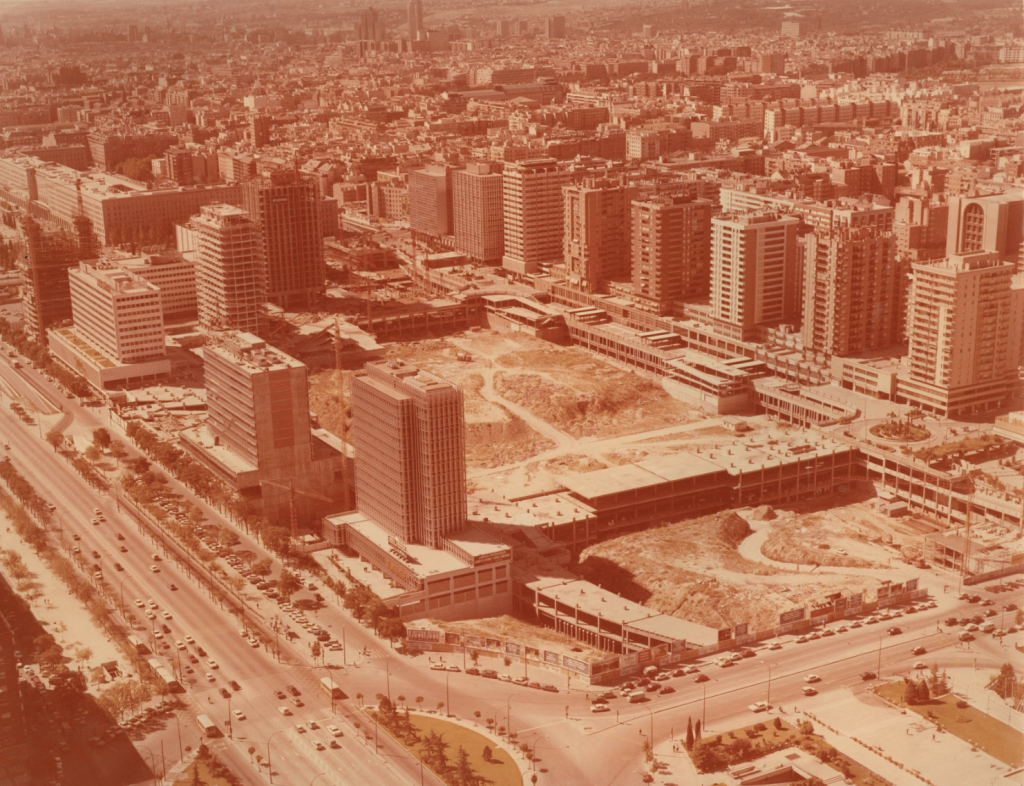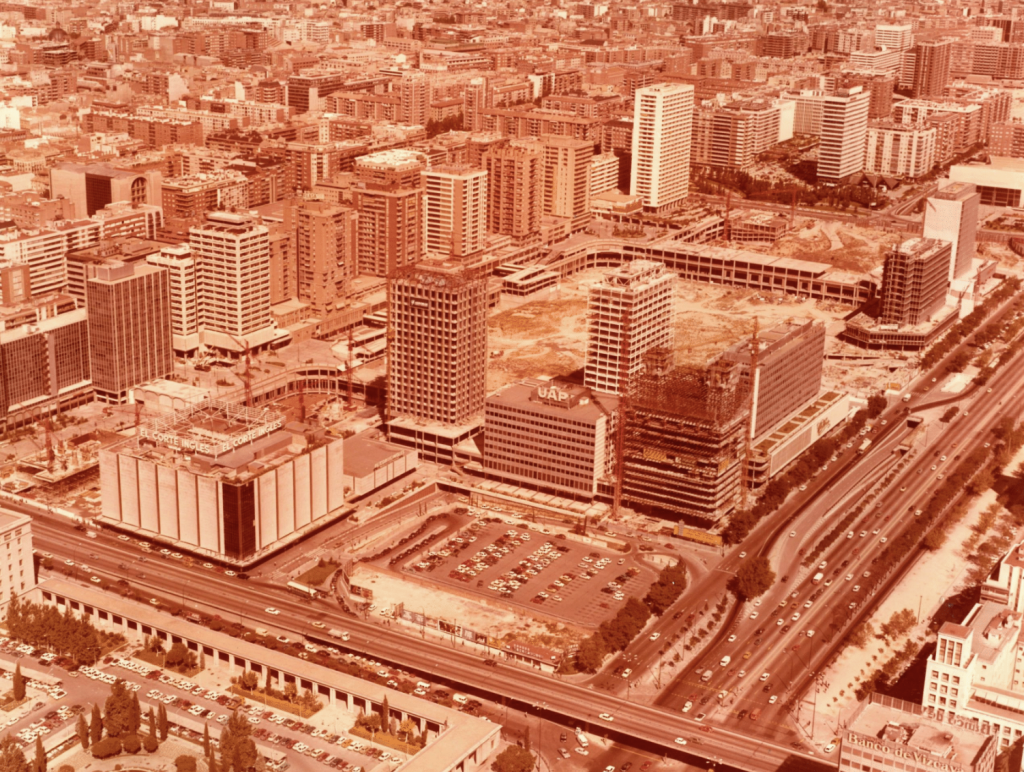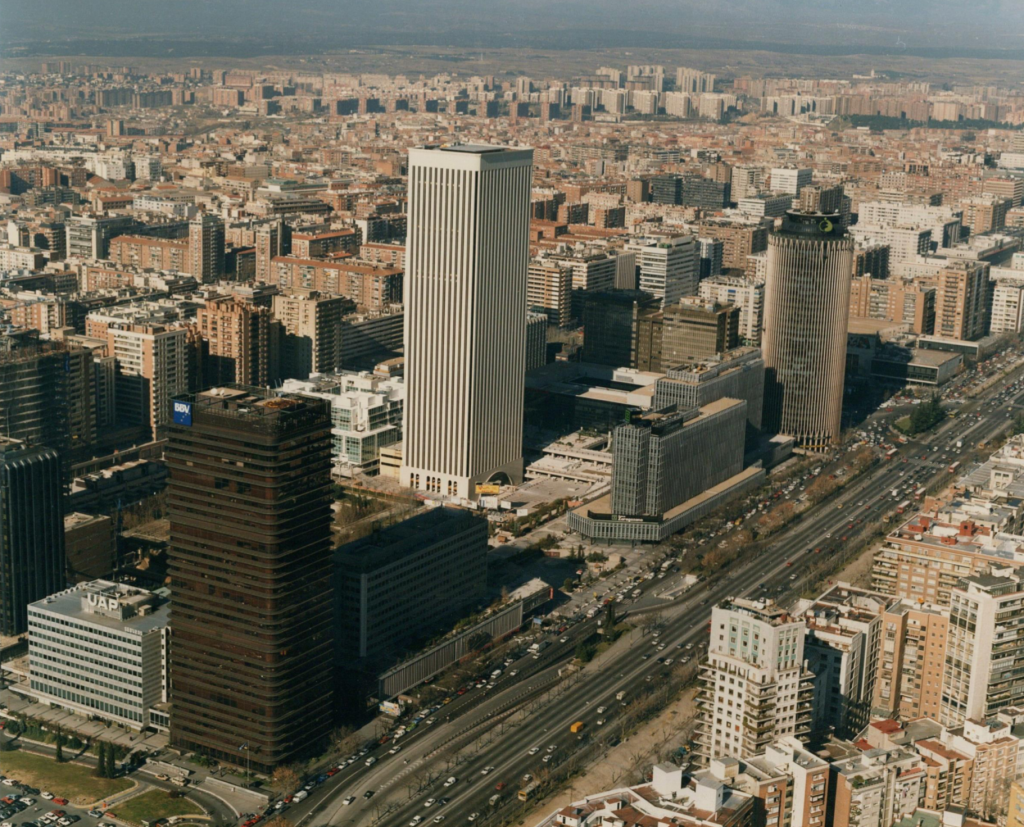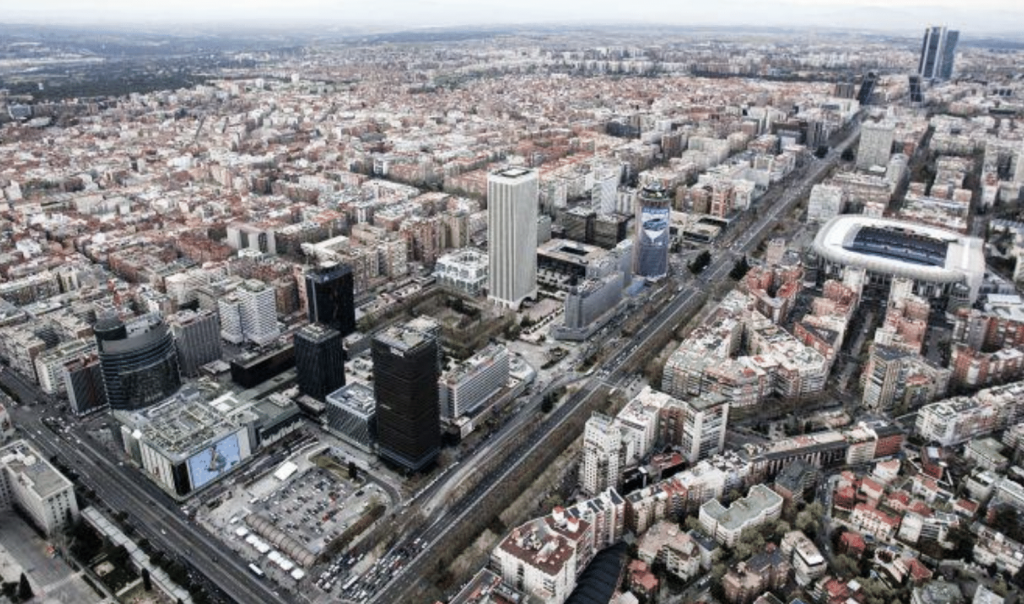HISTORY
AZCA is an acronym for a special development superblock at the economic-financial heart of the city of Madrid.
1954
AZCA was founded in 1954 as a result of the Ideas Competition for a Civic Commercial Centre to relieve congestion in the historic centre.
1957
The architect Antoni Perpiñá won the competition and developed the master plan for AZCA.
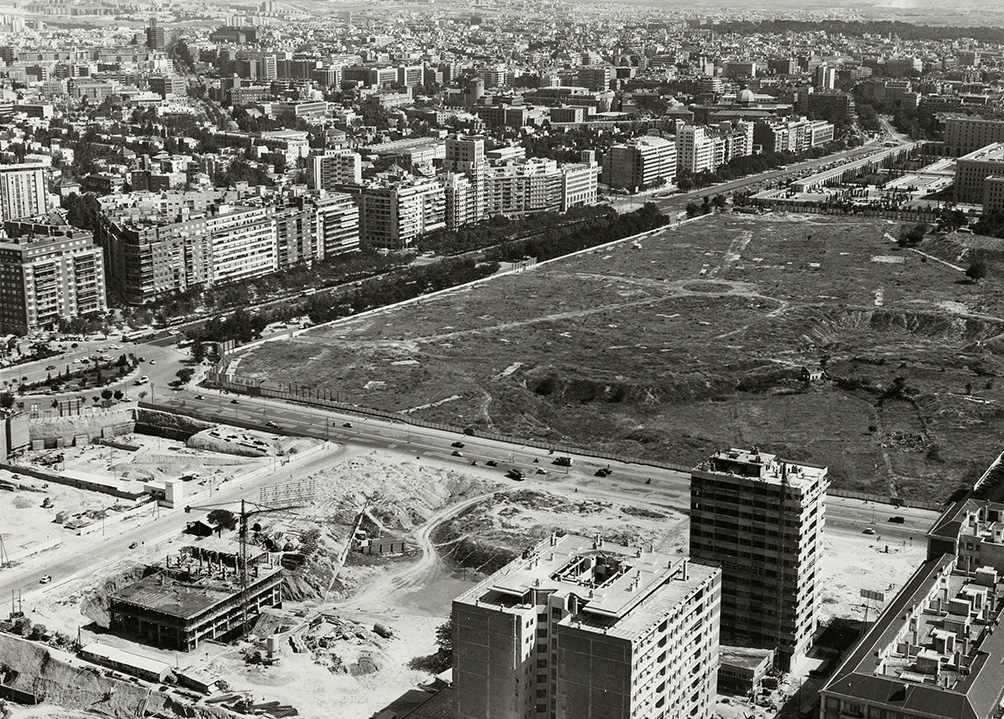
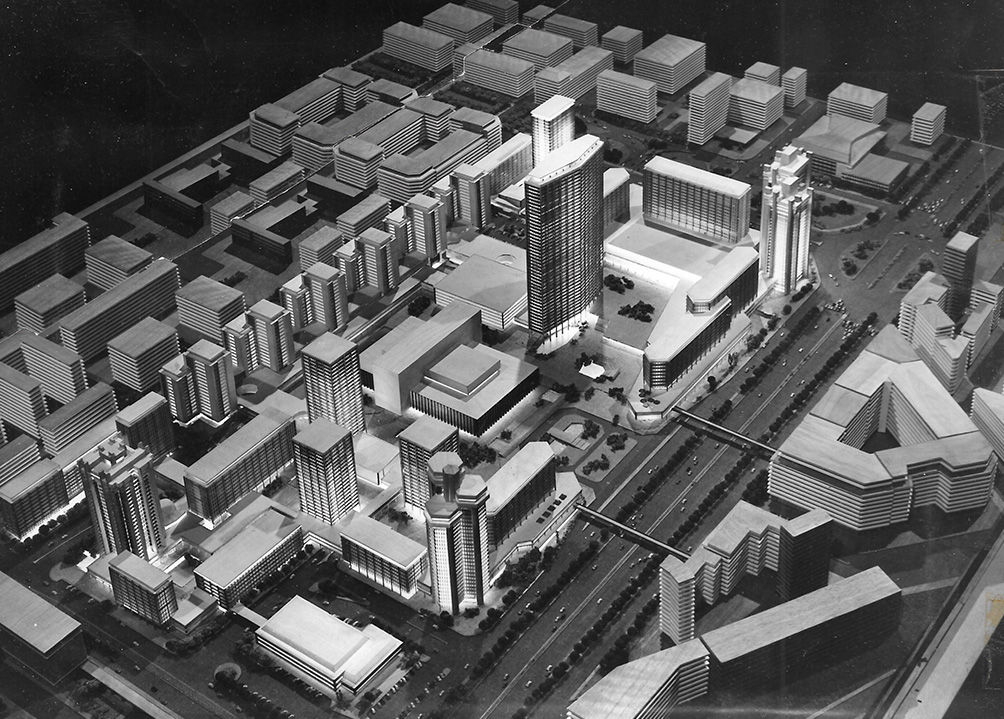
1964
The master plan for AZCA was approved
1968
Work began
Although it’s been considered a pioneer master plan, as the years went by, problems began to arise due to the deterioration of its public space facilities, in addition to a series of conflicts attributed to the combination of different uses.
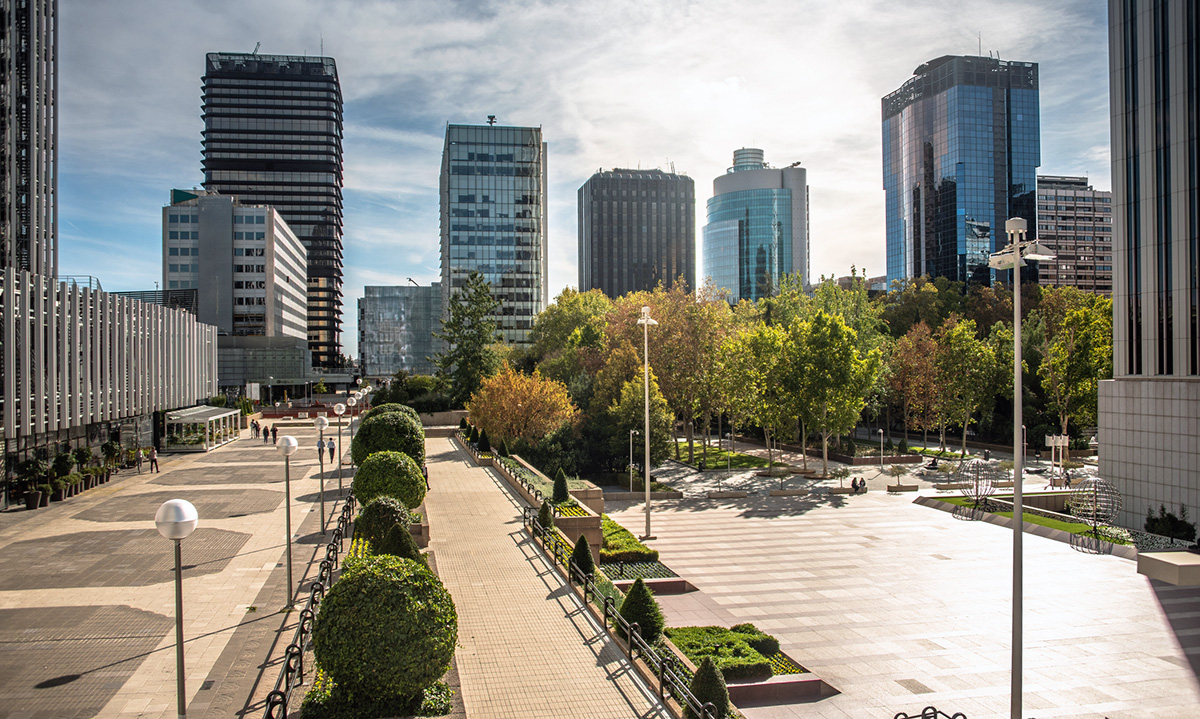
Those of us who form part of RENAZCA believe that it’s time to tackle this exciting project and finally recover this emblematic space of Madrid, so it can be enjoyed by everyone.
Together, we can make AZCA a sustainable landmark, and that is exactly what we are going to achieve.
MILESTONES

1927
1946
1954
1966
1967
1968
1976
1980
2005
2013
2018
2020

